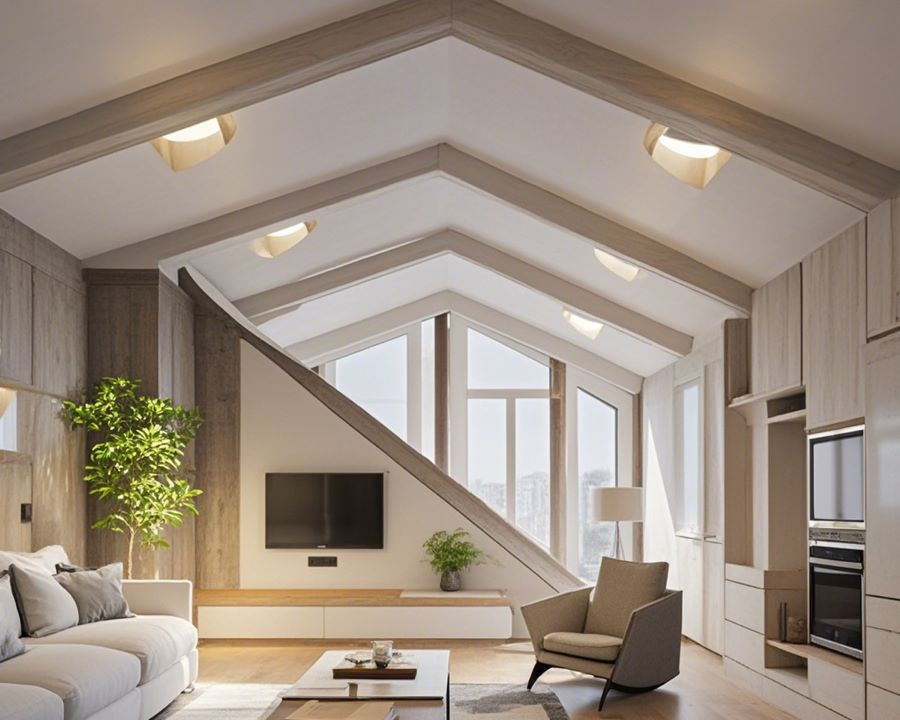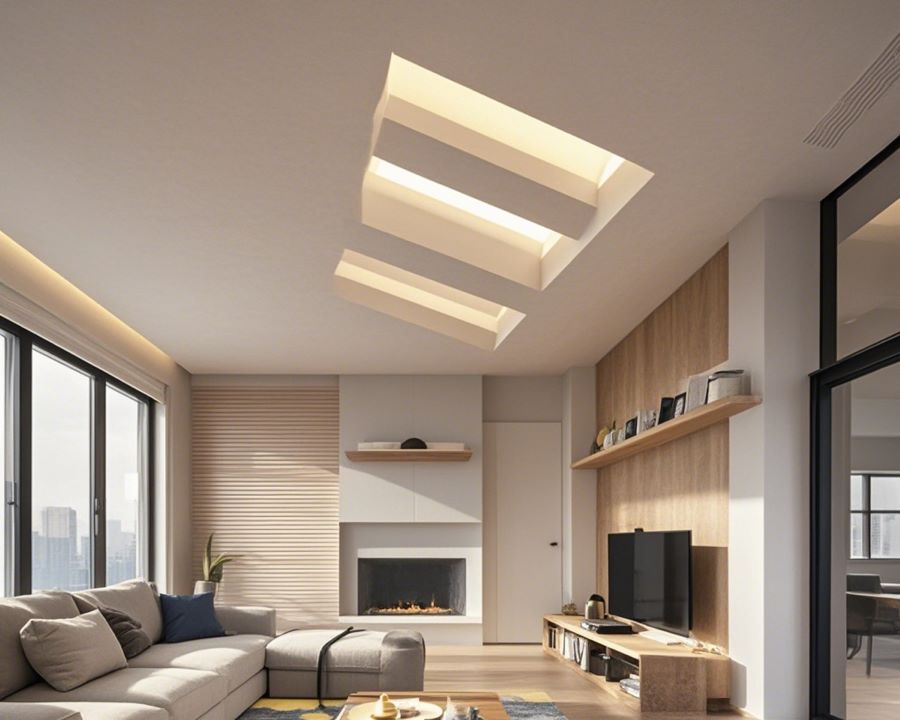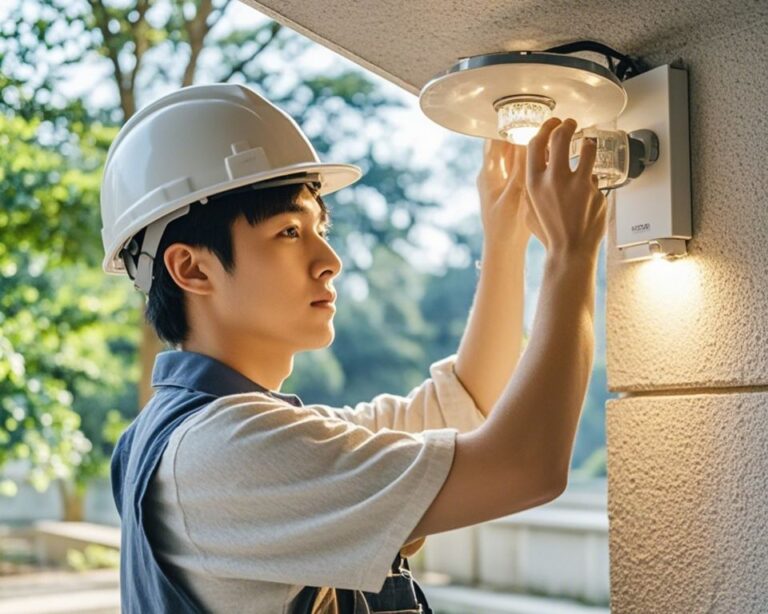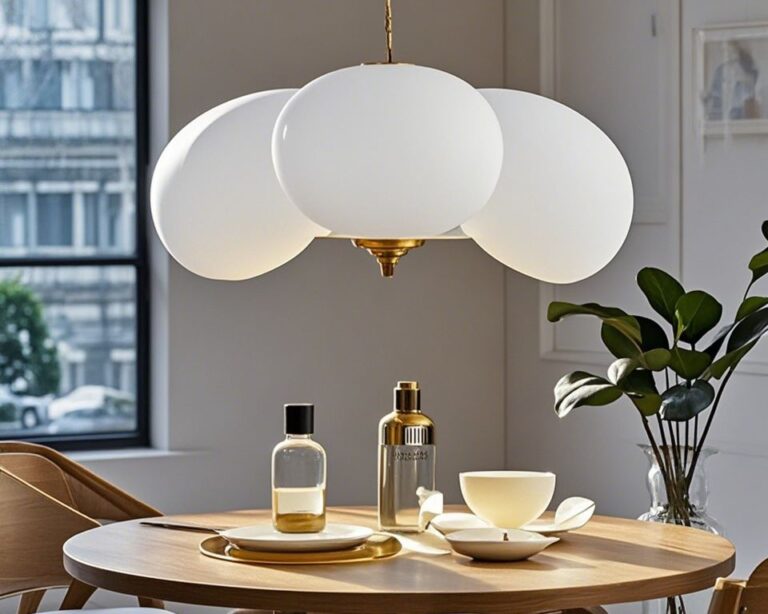Lighting can completely change how a room feels, and sloped ceilings add an extra layer of creativity—and a bit of a challenge. They’re beautiful, sure, but figuring out how to light them properly can be tricky. That’s why recessed lighting is such a great option. It’s simple, stylish, and works perfectly with angled ceilings.
In this guide, we’ll break everything down for you. From why recessed lights are a smart choice to how to avoid common mistakes, you’ll get all the tips you need to make your sloped ceiling look amazing. Ready to turn that tricky ceiling into one of the best features of your home? Let’s jump in!

What Is Sloped Ceiling Recessed Lighting?
Sloped ceiling recessed lighting is a specialized lighting solution designed to fit ceilings that are angled rather than flat. It’s sometimes referred to as “can lighting” because the fixtures themselves resemble small cans that are installed directly into the ceiling. Unlike traditional hanging fixtures or flush-mounted lights, recessed lights are built into the ceiling, creating a sleek and seamless appearance. This is particularly important for sloped ceilings, which can make traditional fixtures look awkward or out of place.
The Challenges of Sloped Ceilings
Sloped ceilings, while architecturally stunning, present unique challenges when it comes to lighting. Traditional ceiling fixtures, like chandeliers or pendants, can sometimes hang unevenly or appear misaligned due to the angled surface. This not only affects the aesthetics of a space but can also result in uneven lighting, with some areas being too bright while others are left in shadow.
Recessed lighting offers a solution by being versatile and adaptable to these angles. Specialized recessed lights for sloped ceilings are designed with adjustable housings or trims that allow the light to be directed straight down or at an angle, ensuring even illumination across the room.
Why Recessed Lighting Works So Well on Sloped Ceilings
One of the biggest advantages of recessed lighting on sloped ceilings is how it complements the architecture. Vaulted or sloped ceilings often draw the eye upward, creating a sense of height and openness. Recessed lights enhance this effect by being discreet and allowing the ceiling’s natural beauty to shine through without distraction. Their low-profile design is especially valuable in spaces where maintaining a minimalist or modern aesthetic is important.
Another benefit is the flexibility recessed lighting provides. With adjustable trims, you can angle the light to highlight specific features in a room, such as a piece of artwork, a fireplace, or even the ceiling itself. This makes recessed lighting an excellent choice for creating focal points or accentuating architectural details.
Where You’ll Commonly See Sloped Ceiling Recessed Lighting
Sloped ceiling recessed lighting is commonly used in spaces like living rooms, attics, and lofts—areas where the ceiling design plays a big role in the overall feel of the room. It’s also popular in modern kitchens and bathrooms, where clean lines and functional lighting are key priorities. In bedrooms with vaulted ceilings, recessed lights can provide a soft, ambient glow, creating a cozy and inviting atmosphere.
For commercial spaces, recessed lighting is a go-to option for retail stores, galleries, and offices with sloped ceilings. The ability to direct light precisely where it’s needed makes it ideal for highlighting merchandise, artwork, or workspaces.
How It Fits Into Different Design Styles
One of the reasons recessed lighting is so popular is its ability to fit into virtually any design style. In modern or contemporary spaces, recessed lights enhance the clean, uncluttered aesthetic. For rustic or farmhouse designs, they blend in subtly, allowing wood beams or other natural materials to take center stage. Even in traditional homes, recessed lights can provide functional illumination without competing with more decorative elements like chandeliers or sconces.
The Technology Behind Sloped Ceiling Recessed Lights
What makes recessed lighting for sloped ceilings different from standard recessed lights is the technology built into the fixtures. Many models come with a gimbal mechanism, which allows the bulb to be tilted within the housing. This ensures that the light beam can be directed straight down, even if the ceiling is at an angle. Some advanced options also include adjustable beam spreads, so you can customize how wide or narrow the light shines.
In addition, most modern recessed lights are compatible with LED bulbs, which are energy-efficient and long-lasting. LEDs are an excellent choice for sloped ceilings because they produce less heat, reducing the risk of overheating in the enclosed space of a recessed fixture. Plus, many LED options are dimmable, giving you more control over the room’s ambiance.
A Stylish and Practical Solution
Ultimately, sloped ceiling recessed lighting is more than just a practical choice—it’s a stylish one. It solves the unique challenges posed by angled ceilings while offering endless possibilities for creative lighting design. Whether you’re looking to brighten a small attic, create a dramatic effect in a vaulted living room, or add a touch of sophistication to a modern kitchen, recessed lighting is a versatile and effective solution.
By understanding the basics of sloped ceiling recessed lighting, you’ll be better equipped to choose the right fixtures and design a lighting plan that enhances your home’s unique architecture.

Why Choose Recessed Lighting for Sloped Ceilings?
Sloped ceilings can be stunning, but they’re tricky when it comes to lighting. Regular fixtures often hang unevenly or look out of place, making the ceiling feel more like a challenge than a feature. That’s where recessed lighting comes in—it’s the pe
Recessed lights fit neatly into the ceiling, creating a clean, modern look that doesn’t distract from the architecture. They’re subtle, versatile, and make the most of your ceiling’s unique angles. Plus, with adjustable options, you can direct the light exactly where you want it, whether it’s highlighting a cozy corner or illuminating the whole room evenly.
Another reason to choose recessed lighting is how it transforms the atmosphere. It can brighten up a space without taking up visual space, making sloped rooms feel open and inviting. Add dimmable features, and you’ve got total control over the mood—from soft, warm lighting for relaxing evenings to bright, focused light for busy mornings.
Simply put, recessed lighting doesn’t just solve a problem—it makes sloped ceilings a design advantage. It’s the kind of lighting that works with your space, not against it, giving you both beauty and functionality in one sleek package.
Key Considerations Before Installation
Before diving into a recessed lighting project, there are a few things to keep in mind. First, think about the angle of your ceiling. Not all recessed lights are designed for sloped ceilings, so you’ll need to look for fixtures with adjustable housings or gimbals that can pivot to match the slope.
Next, consider the trim and housing. The trim is the visible part of the light, while the housing is the structure that holds it in place. For sloped ceilings, you’ll want trims that allow for angled adjustments to ensure the light shines straight down or in the direction you prefer. And don’t forget about bulb types—LEDs are energy-efficient and long-lasting, while halogens offer a warmer light but require more frequent replacements.
Lastly, take note of your ceiling’s insulation. If your lights will be installed near insulation, you’ll need IC-rated housings to prevent overheating. These details might seem small, but they can make a big difference in the safety and effectiveness of your lighting.
How to Choose the Best Recessed Lights for Sloped Ceilings
Choosing the right recessed lights can feel overwhelming with all the options available, but it doesn’t have to be. Start by looking for fixtures specifically labeled for sloped ceilings. These typically feature adjustable trims or eyeball designs that allow you to angle the light precisely.
Brightness is another important factor. Consider how much light the room needs—are you lighting a large, open space or a smaller, cozier area? Pay attention to lumens (which measure brightness) and color temperature. A warm white (2700K–3000K) is great for creating a cozy atmosphere, while a cooler white (4000K–5000K) is better for task-oriented spaces like kitchens or offices.
If you’re unsure where to start, stick with well-known brands that specialize in lighting. Look for products with positive reviews and, if possible, test a few options in-store or order samples to see how they look in your space.

Recessed Lighting Placement for Sloped Ceilings
Getting the placement of recessed lighting right on sloped ceilings is the key to achieving a beautifully lit space. It’s not just about installing lights; it’s about creating balance, eliminating shadows, and making the most of the unique angles your ceiling offers. Proper placement can turn a challenging ceiling into a feature that enhances the entire room.
Think About Function First
The first step in planning recessed lighting placement is understanding how you’ll use the room. Are you looking for bright, even lighting for tasks like cooking or working? Or do you want soft, ambient light for relaxing or entertaining? The purpose of the room will guide where and how many recessed lights you’ll need.
For task lighting, focus on placing lights directly above the areas where you’ll need illumination, like countertops, desks, or reading spots. For ambient lighting, space the lights evenly to create a consistent glow across the room.
Avoid the “Runway Effect”
One common mistake with recessed lighting is placing the fixtures in a straight line down the slope of the ceiling. While this may seem logical, it can make the room feel narrow and awkward, like an airport runway. Instead, stagger the lights or group them strategically to distribute light more naturally and create a sense of depth.
Highlight Features
Sloped ceilings often come with unique architectural details, like exposed beams, arches, or dramatic angles. Use recessed lighting to highlight these features and add dimension to the space. For instance, placing lights near the peak of the slope can draw attention upward, emphasizing the height of the ceiling. Similarly, angling lights to wash softly across a wall can create a cozy, inviting atmosphere.
Space Lights Correctly
Spacing is crucial for achieving balanced lighting. A general rule of thumb is to space recessed lights about 4 to 6 feet apart, but sloped ceilings can change this guideline slightly. You’ll also need to account for the height of the ceiling—higher ceilings often require more lights or brighter fixtures to ensure adequate coverage.
To avoid harsh shadows or uneven lighting, experiment with placement before finalizing your plan. Using adjustable trims can help fine-tune the direction and intensity of light, especially on sloped surfaces.
Create Layers of Light
Recessed lighting works best as part of a layered lighting scheme. Combine it with other fixtures like pendants, sconces, or floor lamps to provide different types of light for various needs. For example, you could use recessed lights for general illumination and pendants to create a focal point over a dining table or kitchen island.
Don’t Forget Dimmer Switches
Dimmer switches are a game-changer when it comes to recessed lighting on sloped ceilings. They let you control the brightness of your lights, allowing you to adjust the atmosphere of the room as needed. This is especially important in spaces like living rooms or bedrooms, where you might want bright light during the day but a softer glow in the evening.
Final Thoughts on Placement
Recessed lighting placement for sloped ceilings isn’t just about functionality—it’s about enhancing the overall feel of the room. By planning thoughtfully and considering how light interacts with the angles and features of your ceiling, you can create a space that feels both beautifully designed and perfectly lit. With the right placement, your sloped ceiling becomes not just a challenge but a stunning design asset.

Common Mistakes to Avoid with Sloped Ceiling Recessed Lighting
Installing recessed lighting on sloped ceilings can transform a space, but getting it wrong can lead to frustration, wasted time, and added costs. Avoiding common mistakes will not only save you headaches but also ensure your lighting enhances the room’s beauty and functionality. Here are the pitfalls to watch out for—and how to steer clear of them.
Ignoring the Ceiling Angle
One of the most frequent mistakes is not accounting for the slope of the ceiling. Regular recessed lights designed for flat ceilings won’t work well on an angle—they’ll cast light unevenly, leaving awkward shadows or glaring hot spots. Always choose fixtures specifically made for sloped ceilings, with adjustable trims or gimbals that let you direct the light properly.
Poor Light Placement
Placement is everything. Too often, people install recessed lights in a straight line down the slope, thinking this will provide even coverage. Unfortunately, this can create a “runway effect,” where the room feels narrow and overly directional. Instead, stagger the lights or arrange them in a pattern that complements the room’s layout. Think about where light is needed most and distribute fixtures accordingly.
Over- or Under-Lighting the Room
It’s easy to get carried away with too many lights or, on the flip side, not installing enough. Too many recessed lights can make the room feel overly bright and clinical, while too few can leave dark corners or inadequate task lighting. A general guideline is to space lights about 4 to 6 feet apart, but consider the size of the room, the ceiling height, and the purpose of the space when planning.
Forgetting Layered Lighting
Relying solely on recessed lighting is a common mistake. While it’s great for general illumination, recessed lighting alone can make a space feel flat and one-dimensional. Combine it with other light sources, like wall sconces, pendants, or floor lamps, to create layers of light that add depth and atmosphere. For example, use recessed lights for ambient lighting and a pendant or chandelier as a focal point.
Overlooking Dimming Options
Another mistake is skipping dimmer switches. Recessed lights are incredibly versatile, but without dimming capabilities, you lose a lot of control over the mood and function of the room. Dimmer switches let you adjust the brightness to suit the time of day, activity, or desired ambiance. Bright light for cleaning or working; soft, warm light for relaxing evenings.
Not Highlighting Architectural Features
Sloped ceilings often come with unique features like beams, arches, or dramatic angles. Failing to highlight these elements is a missed opportunity. Use recessed lighting to draw attention to these details, creating visual interest and enhancing the room’s character. For example, angling a recessed light to wash a beam in soft light can add warmth and charm.
Skimping on Quality Fixtures
Choosing low-quality fixtures or bulbs is a mistake that can cost you more in the long run. Cheap materials may not last, and poor-quality bulbs can flicker, overheat, or burn out quickly. Invest in high-quality, energy-efficient LED lights designed for sloped ceilings—they’ll provide better performance, last longer, and save you money on energy bills.
Overcomplicating the Design
While it’s important to think carefully about placement and lighting layers, it’s easy to overcomplicate things. Some homeowners add too many different types of lighting or try to highlight every feature, making the room feel busy or disjointed. Keep it simple—focus on a few key areas and create a balanced design that feels cohesive.
Neglecting Professional Help
Lastly, don’t underestimate the value of hiring a professional, especially if you’re unfamiliar with electrical work or lighting design. Incorrect installation can lead to safety issues, uneven lighting, or costly repairs. An experienced electrician or lighting designer can help you avoid mistakes and ensure your recessed lights are installed correctly and effectively.
Conclusion
Sloped ceilings don’t have to be a headache when it comes to lighting. With recessed lights, you can highlight the unique shape of your ceiling while making the room bright and inviting. It’s all about choosing the right fixtures, placing them thoughtfully, and adding your own creative touch.
So, take your time and plan it out. Think about how you use the space and where the light will work best. Once it’s done, you’ll have a beautifully lit room that not only works for you but also wows everyone who walks in. Good lighting makes all the difference—go make it happen!




